
The customer: Bartolomeo Panchiatiki, a pair picture of his wife Lucretia to the portrait of Bartolomeo himself, also located in Florence. The formation of the painting of mature Mannerism is closely connected with Florence, where its largest representative is Angelo Bronzino, a pupil and close friend of Pontormo, already in the late 1530s, who became the court painter Cosimo I of the Medici; He is also considered one of the creators of the type of Manneristic ceremonial portrait. Representative, masterly portraits of the artist are among the most striking pages of the art of mature Mannerism.
Master of Mannerism, Bronzino can perfectly build an imposing composition, introduce accessories that emphasize the class position of the model, give his heroes arrogant negligence, refined aristocracy and, for all idealization, maintain a convincing portrait resemblance. But in the portraits of the Italian artist, the impact of the strict demands of court culture, which limited the portraitist’s task by capturing the official-ceremonial appearance of a person, his class greatness, clearly affects.
The portrait of Lucrezia Panchyatika was written in 1540; presented against the background of the niche Lucrezia, unnaturally straightened, looking straight ahead in a motionless, stopped look, seems to be a frozen statue. This is emphasized by the specificity of the rigid, cold pictorial manner of Bronzino, whose material tactility is replaced by illusory. The surface of Lucrece’s face, written in a cohesive enamel manner, seems unnaturally smooth, in tone it is lighter than a pearl necklace and resembles ivory, the sharply and rigidly modeled folds of a ruby red silk dress appear to be sculptured from stone, the hair acquires a metallic glow.
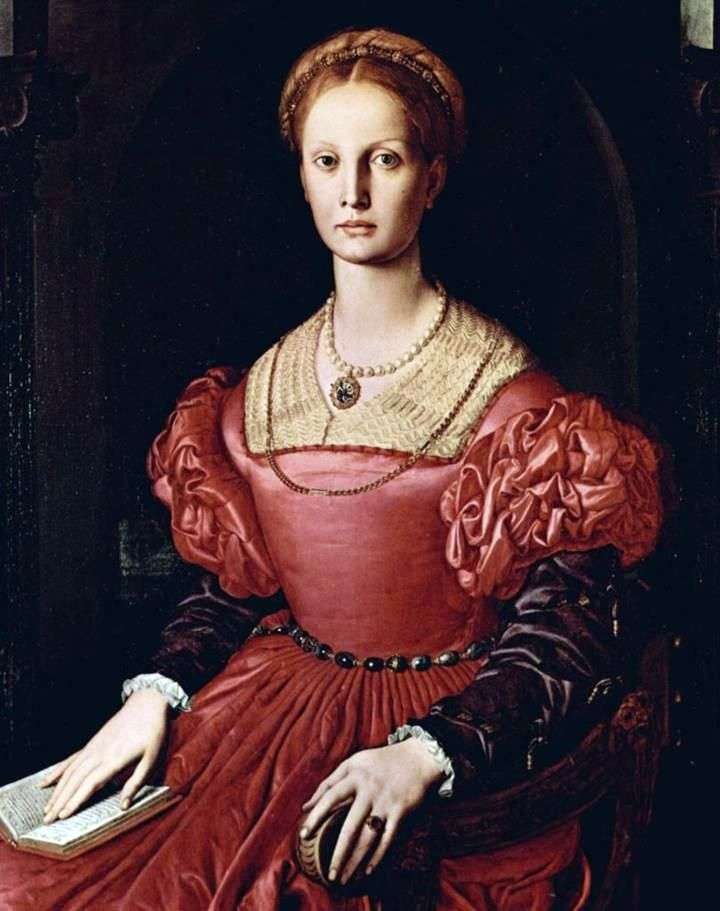 Portrait of Lucrezia Panchatiki by Agnolo Bronzino
Portrait of Lucrezia Panchatiki by Agnolo Bronzino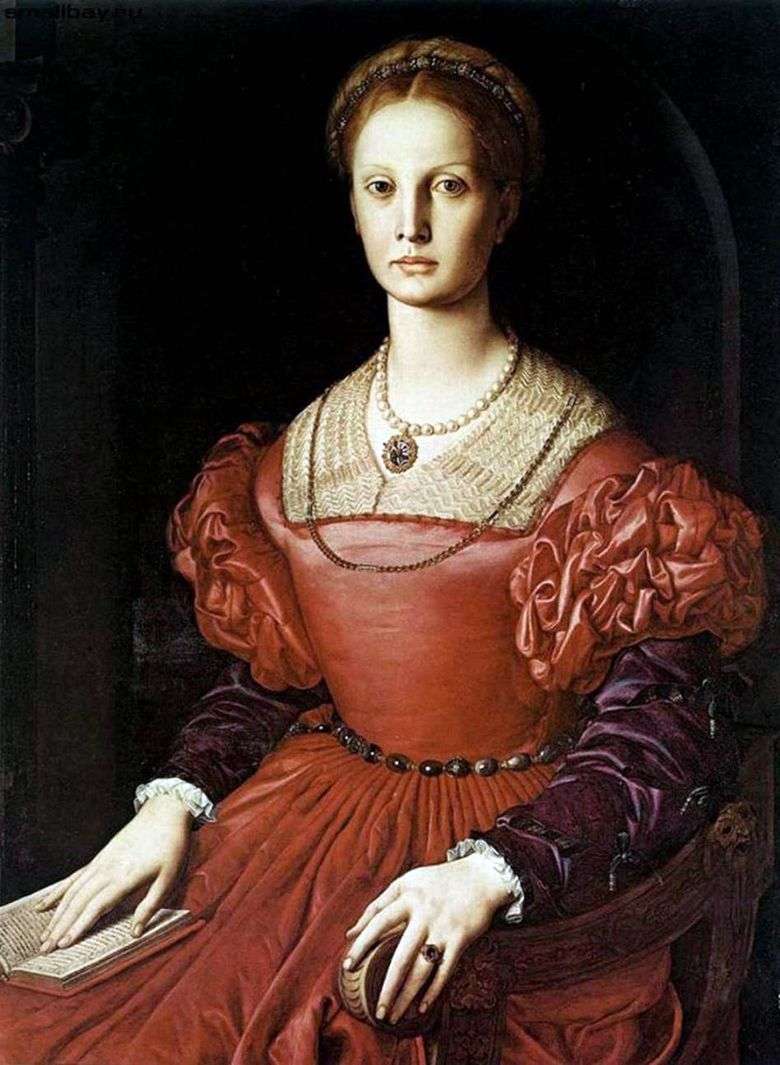 Lucretia Panchiatiki – Agnolo Bronzino
Lucretia Panchiatiki – Agnolo Bronzino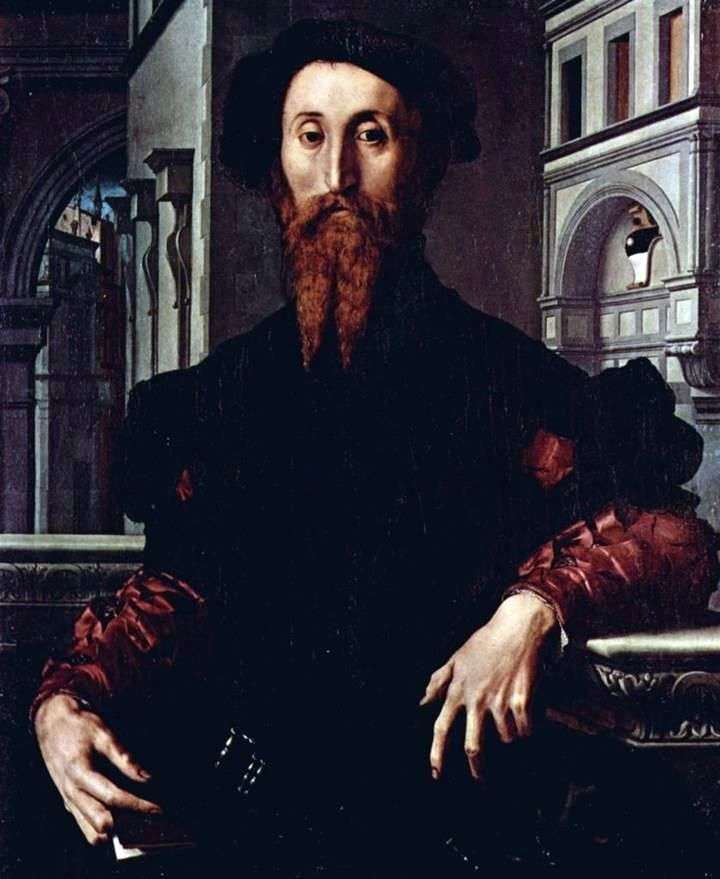 Portrait of Bartolomeo Panchatiki by Agnolo Bronzino
Portrait of Bartolomeo Panchatiki by Agnolo Bronzino Worshiping the cross with a bronze snake (fresco) by Agnolo Bronzino
Worshiping the cross with a bronze snake (fresco) by Agnolo Bronzino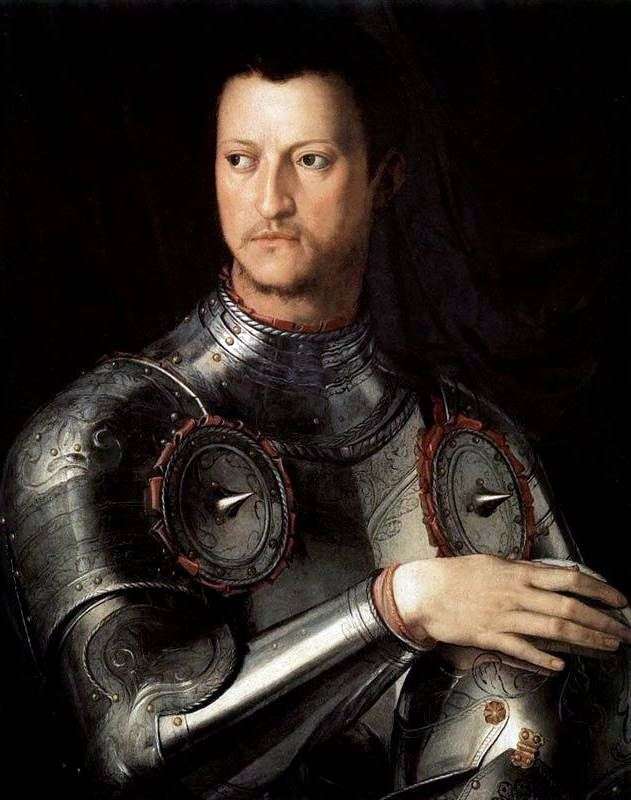 Portrait of Cosimo the First Medici in armor by Agnolo Bronzino
Portrait of Cosimo the First Medici in armor by Agnolo Bronzino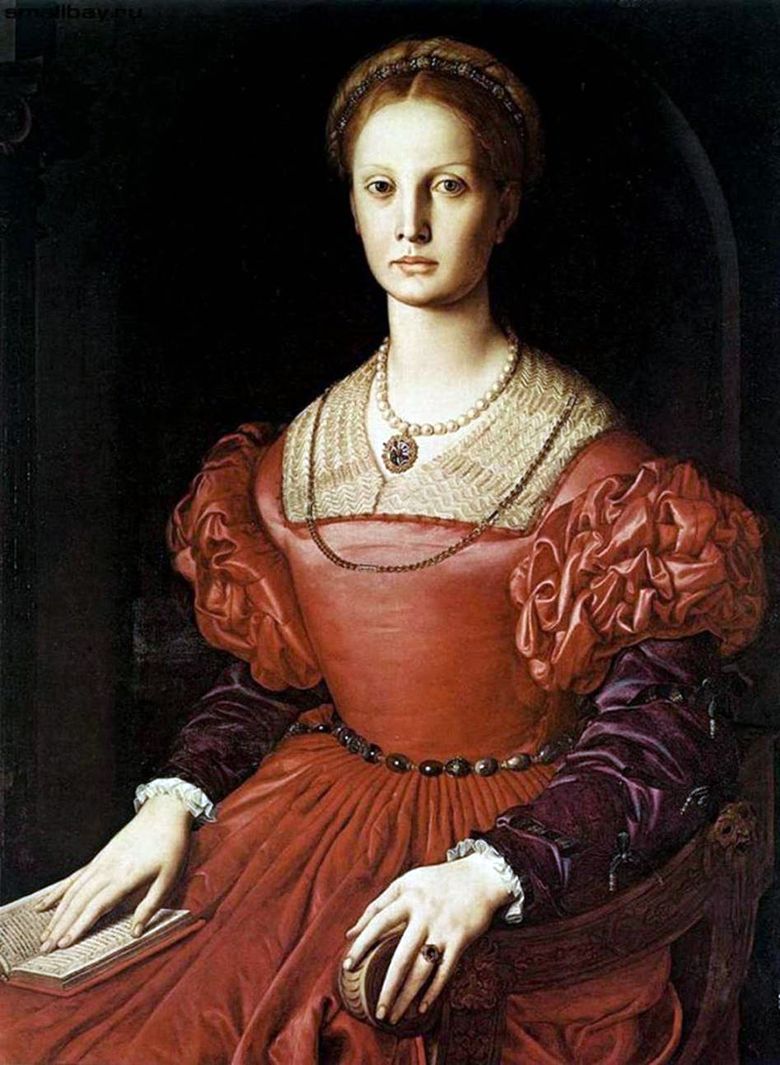 Lucretia Panciatics – Agnolo Bronzino
Lucretia Panciatics – Agnolo Bronzino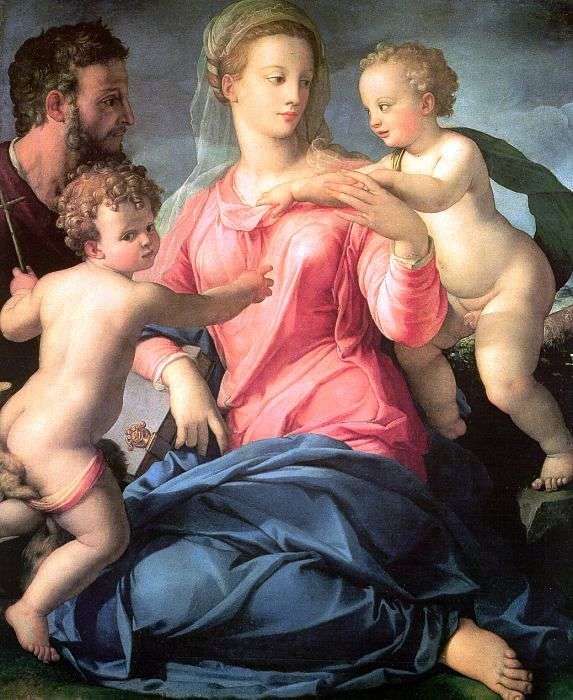 The Holy Family with the Little John the Baptist (Madonna Stroganova) by Agnolo Bronzino
The Holy Family with the Little John the Baptist (Madonna Stroganova) by Agnolo Bronzino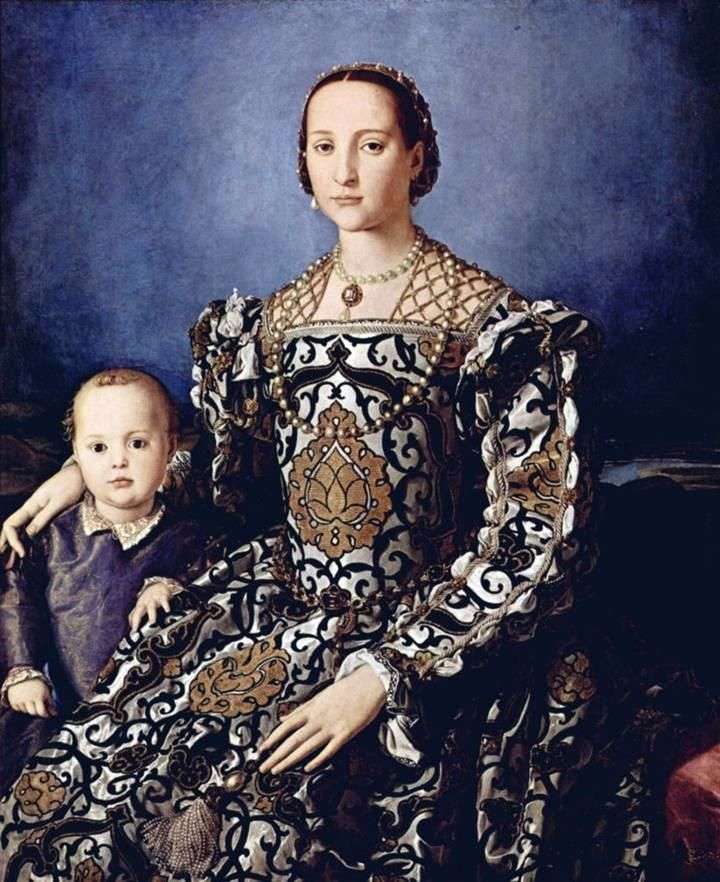 Portrait of Eleanor of Toledo with his son Giovanni Medici by Agnolo Bronzino
Portrait of Eleanor of Toledo with his son Giovanni Medici by Agnolo Bronzino